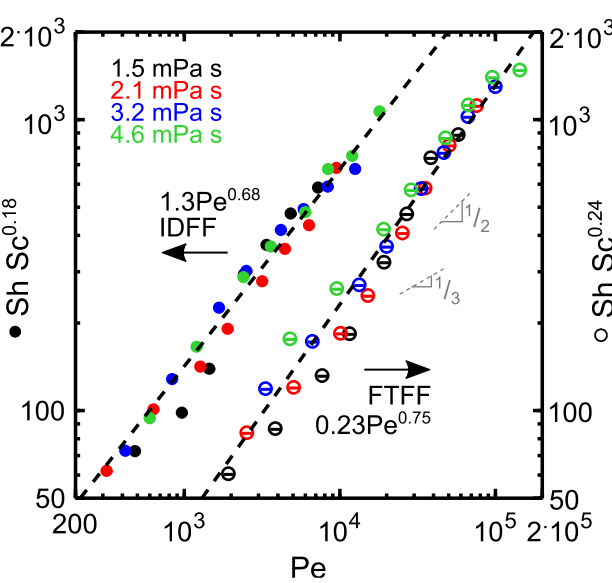
Scientific Achievement
A methodology for and the results from quantification of the mass-transfer coefficient is demonstrated in the single-electrolyte configuration of JCESR’s Gen-2 cell using a model redox-active electrolyte (RAE) with a tunable viscosity.
Significance and Impact
The ability to estimate cell performance parameters, in this case the mass-transfer coefficient, based on material properties (e.g., viscosity) and operating parameters (e.g., flow rate) is critical to enabling scale-up of RFB systems and estimating performance in advance of time- and cost-intensive flow cell measurements.
Research Details
- The model RAE, 0.5 M FeCl2 / 0.5 M FeCl3 / 2 M HCl, included various amounts of glucose to control viscosity.
- The RAE was characterized in terms of active-species diffusivity (via rotating disk voltammetry), conductivity (2-electrode Swagelok cell), and viscosity (parallel-plate rheometer) prior to flow cell measurements.
- A single-electrolyte 2.55 cm2 cell was studied with both an interdigitated (IDFF) and simple flow-through flow field (FTFF).

